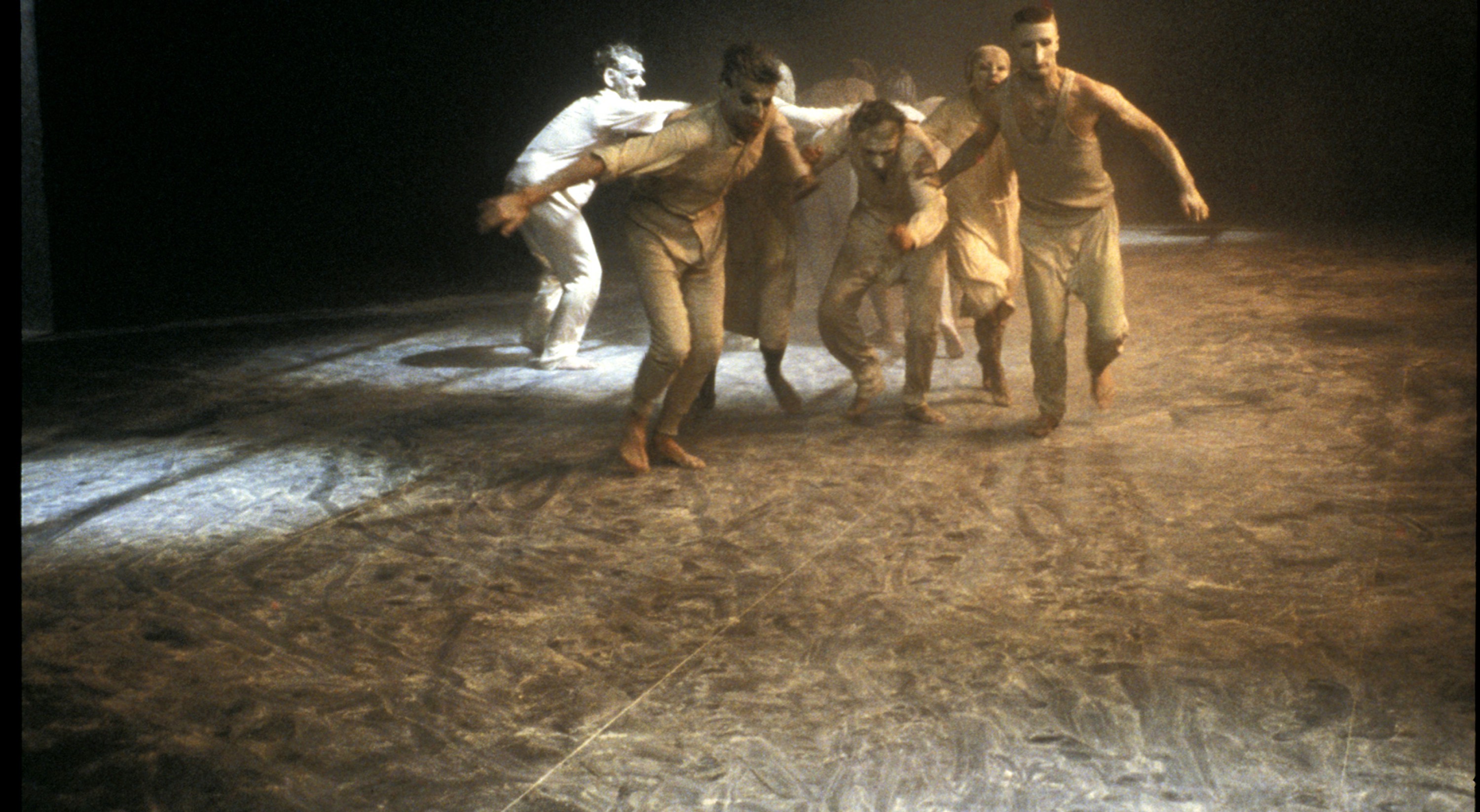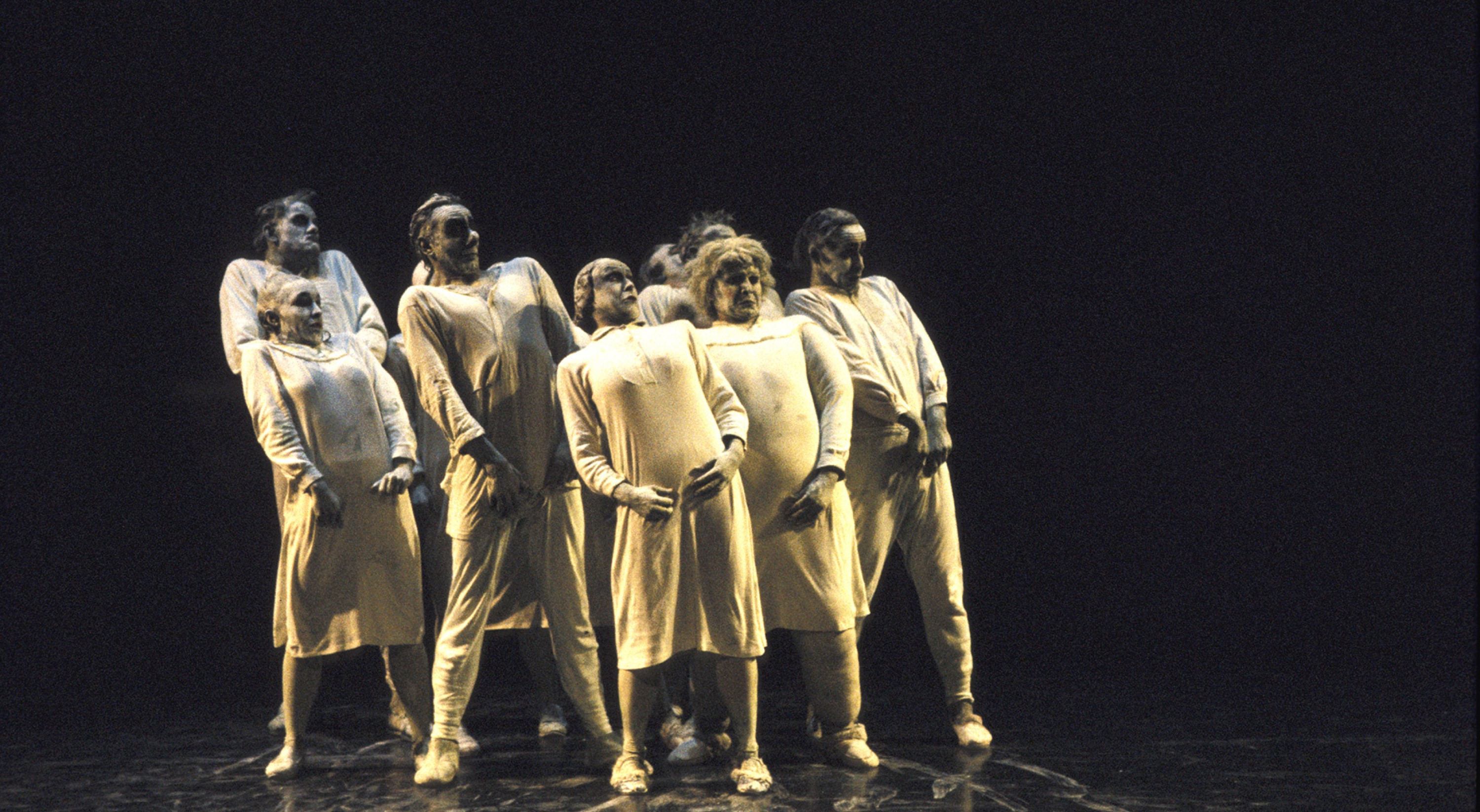Maguy Marin
May B
novembernov 16 – 17
novembernov 20 - december – dec 20
May B
Choreography, Maguy Marin
Costumes, Louise Marin
Light, Compagnie Maguy Marin
Music, Franz Schubert, Gilles de Binche, Gavin Bryars
With Ulises Alvarez, Romain Bertet, Kaïs Chouibi, Laura Frigato, Françoise Leick, Mayalen Otondo, Lia Rodrigues, Ennio Sammarco, Jeanne Vallauri, Adolfo Vargas
Coproduction Maguy Marin Company ; Maison des Arts et de la Culture de Créteil
Revival in 2012 for the Festival d’Automne à Paris in corealisation with Le CENTQUATRE – Paris and Théâtre du Rond-Point
In 2012, Maguy Marin Company is funded by Ministère de la Culture et de la Communication and the city of Toulouse and Région Midi-Pyrénées..
Partnership with France Inter
Premiered Novembre 4, 1981 at Théâtre Municipal d'Angers
To create May B, Maguy Marin drew inspiration from Samuel Beckett’s characters, who struggle to form human bonds in spite of the absurdity of life.
Her choreography builds upon their constantly interrupted circulations.
The piece, created in 1981 and now considered a masterpiece of contemporary dance, has been performed worldwide, and is still as riveting and subversive today as it was thirty years ago.

